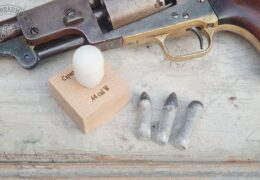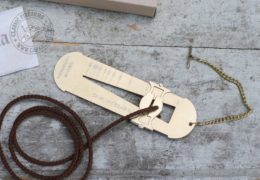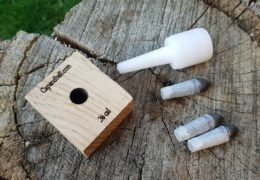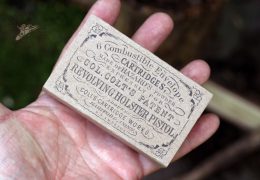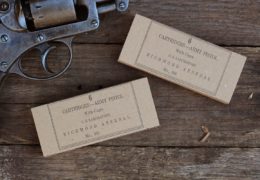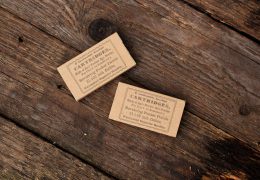Remington’s first percussion revolver: the 1st model Beals
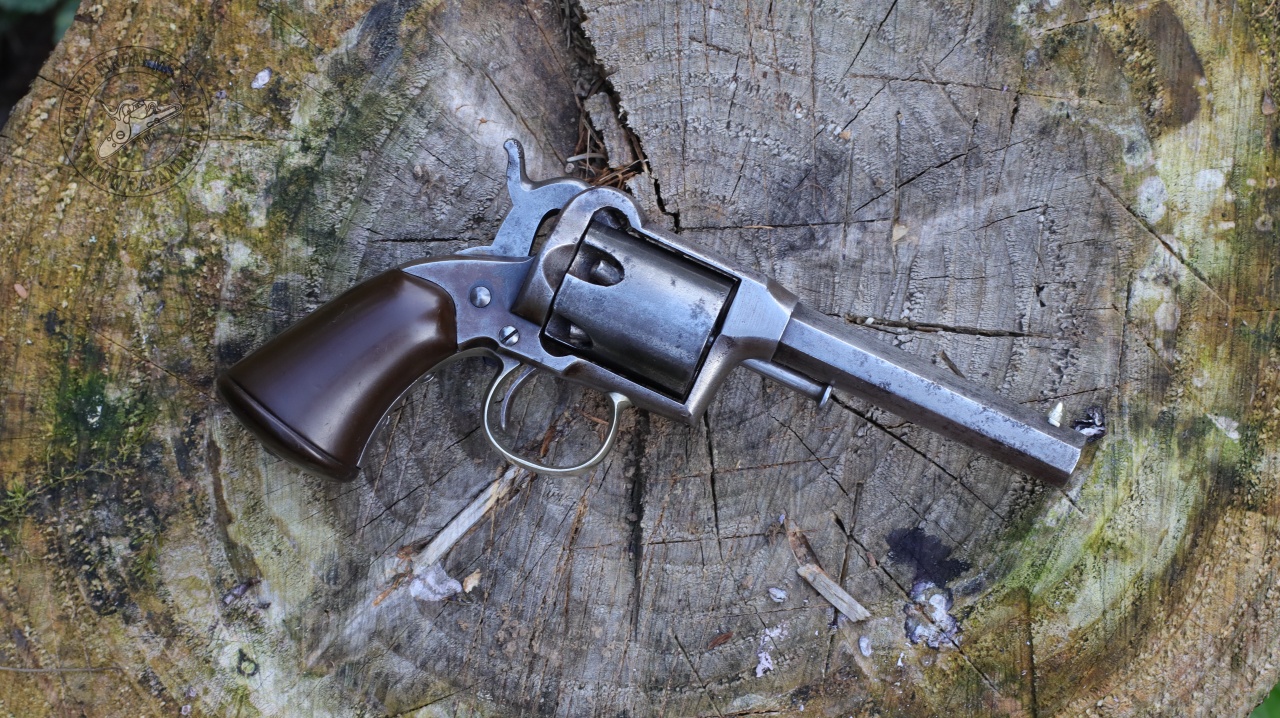
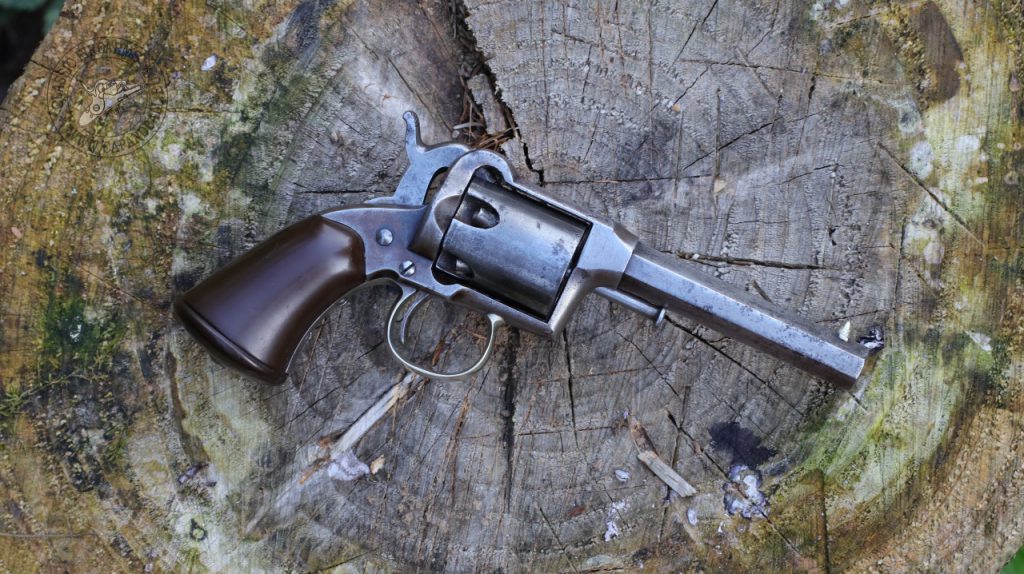
Remington 1st model Beals revolver .31 cal
In the 1850’s Colt ruled the revolver market. His patent protecting the reliable Colt style cylinder locking mechanism ensured that the well-advertised Colt revolvers dominated both the civilian and military market. Colt, or as he apostrophe himself Colonel Colt was a good business man. Understood the basics of advertising and modern way of mass production based on interchangeability, but also was eager on building good relationship with the decision makers of the government.
In the shades of the king hundreds of wannabe gun makers lined up to overtake, or at least to seize a part of the great cake of government purchases. They had to be innovative to find solutions avoiding patent infringement. One of these ventures was the Remington company. The story of their early Remington percussion revolver is exactly the history of enthusiastic young gun maker entrepreneurs, challenging the Colt legacy. This is the story of Fordyce Beals and Eliphalet Remington.
History of the Beals pocket revolvers
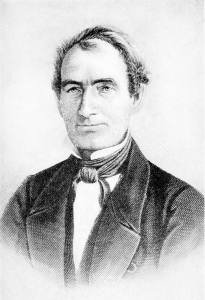
Eliphalet Remington
The key gun related field of business for Remington in the early years was making rifle and musket barrels. This activity was close to the original purpose of the factory located close to the Erie channel near Ilion, being a foundry where scrap iron was collected and melted into bars. The fuel was the coal created from the trees of the surrounding area therefore, the factory had its own saw mill as well. The foundry operated until ore and coal became available in large quantities. Gun making had not been the only core business of the company until 1845 when the U.S. entered war with Mexico. This was the time when Eliphalet Remington purchased a complete contract of the so called “mule ear” carbines designed by William Jenks from Ames and Co. of Springfield. The carbine was named after the distinctive design of the hammer that fell on the nipple sideway from the right side of the gun. The deal included the machinery as well, so finally the Remington company tooled up for high volume gun making finally and started to grow strongly. The total production of the carbines reached 1000 in 1847-48.
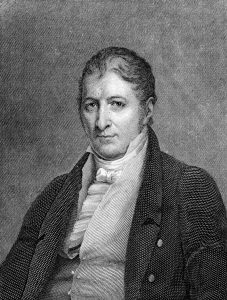
Eli Whitney
The first revolver design to be made by Remington is closely related to Fordyce Beals, and ingenious gun maker, owner of many firearms patents. He was working for Remington until 1854 when he teamed up with Eli Whitney, a key player in the industrialization of gun making and introducing manufacturing standards in the U.S. Whitney learnt the production methods of Honoré Blanc from France and convinced the congress to adopt the French way of firearms manufacturing to be able to provide full interchangeability of parts. Blanc developed his production method to speed up the production of the Mle 1777 muskets of the French army during the years of revolutionary and French wars. The theory was that all parts have to be checked by go and no-go gauges. However, this acceptance method had a negative impact on productivity as the manufacturers were not able to cope up with the requirements. The number of rejected parts increased dramatically, productivity dropped therefore the French government decided to abandon the modern idea and revert to the production methods of the Ancien Régime. Whitney, being an excellent engineer, understood the advantages of interchangeability, therefore copied Blanc’s system and demonstrated it in 1808 to the government of the United States. Although the demonstration was successful, Whitney used carefully selected and hand finished guns for this purpose. Neither the sample pieces were cost effective nor they were manufactured in the suggested way. The full standardization and complete interchangeability was not possible to reach up until the 1850s.
It is out of question the Blanc and Whitney had a strong influence of Fordyce Beals as well. He patented his first single action revolver design in 26 September 1854 under U.S. patent No. 11,715. The ring trigger operated the cylinder rotation and also fired the gun, but the hammer had to be cocked manually. Beals did not have production capacity and Whitney was collecting firearms designers who did not have a factory, so for Beals and Whitney this was a win-win situation. Approximately 3200 Whitney-Beals Walking-Beam pocket revolvers were manufactured.
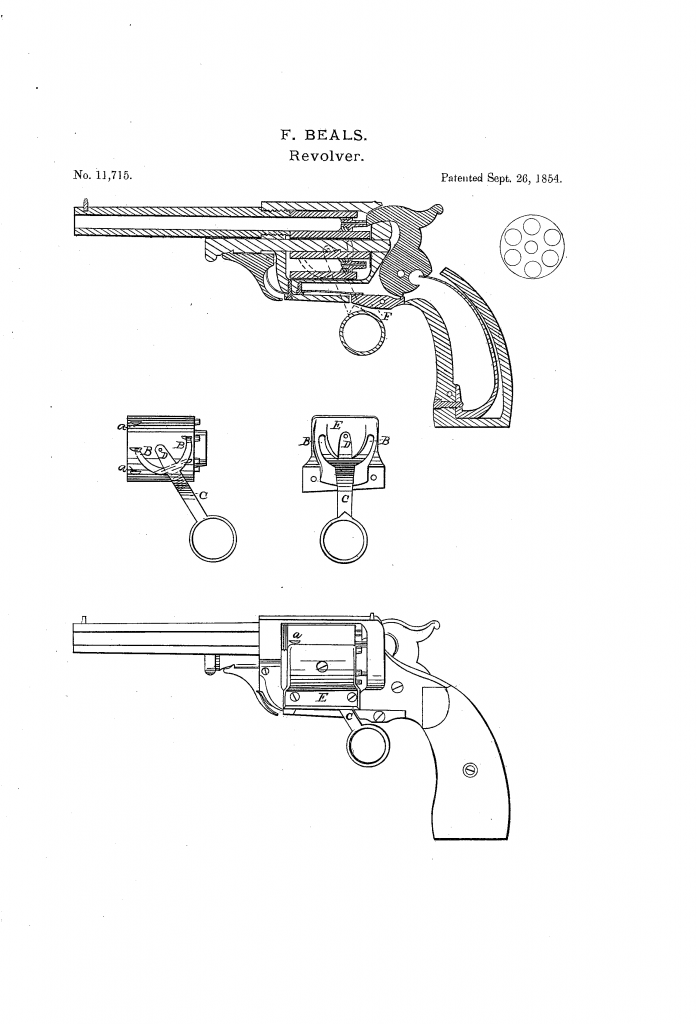
Beals’ patent of the walking beam revolver for Whitney
Beals returned to the Remington company in 1856 to create their first percussion revolver. The First Model Beals revolver was based on two patents: No. 15,167 of 26 June 1856, patenting the cylinder rotating method, and No. 17,359 of 24 May 1857 patenting the cylinder locking system. Both patent dates are visible on the top of the barrel. In 1858 Beals redesigned the frame to accept a sheath trigger without the need for a trigger guard. This resulted the Second Model Beals revolver. The last addition to the pocket revolver family came in September 1858 based on patent No. 21,478 that added the Beals-style loading ramrod, that had to be lowered to be able to pull the axis of the cylinder.
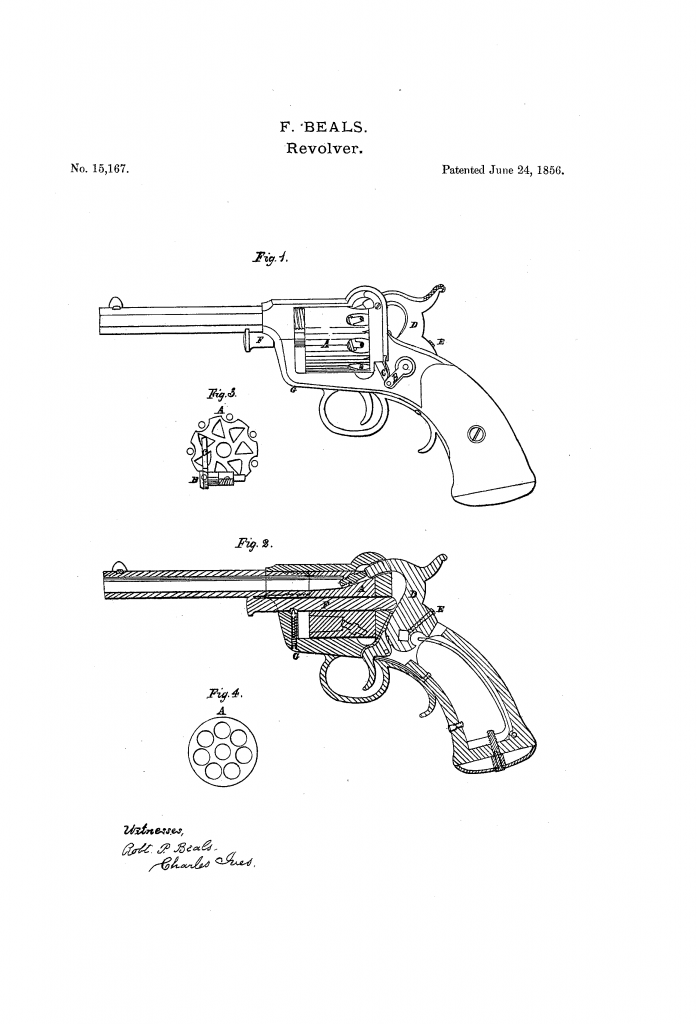
Patent of the first model Beals revolver
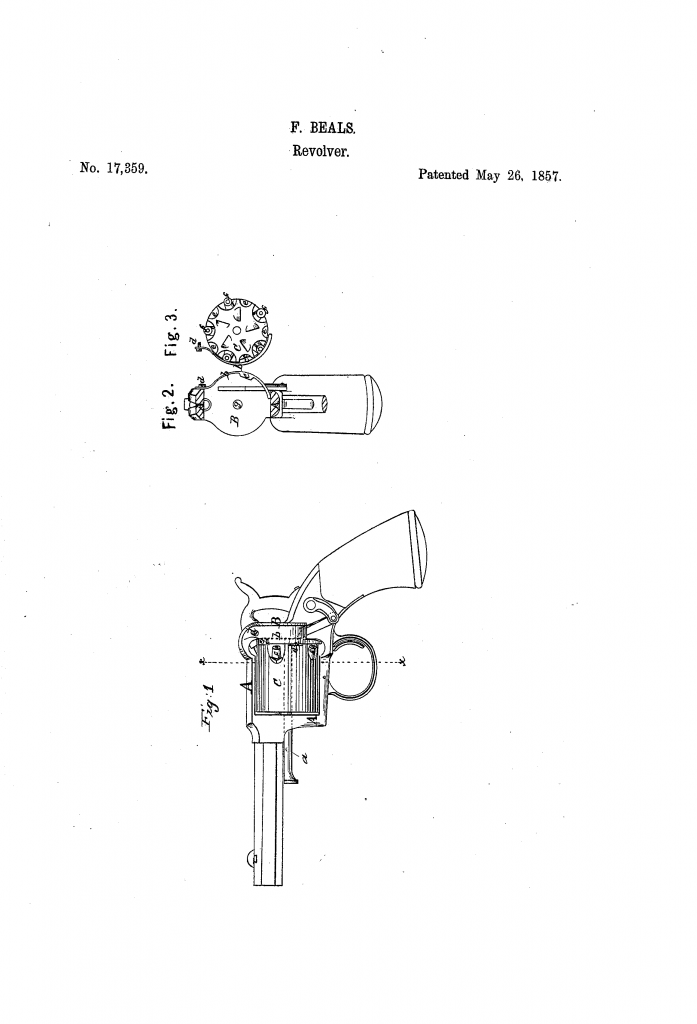
Beals’ patent for the locking mechanism
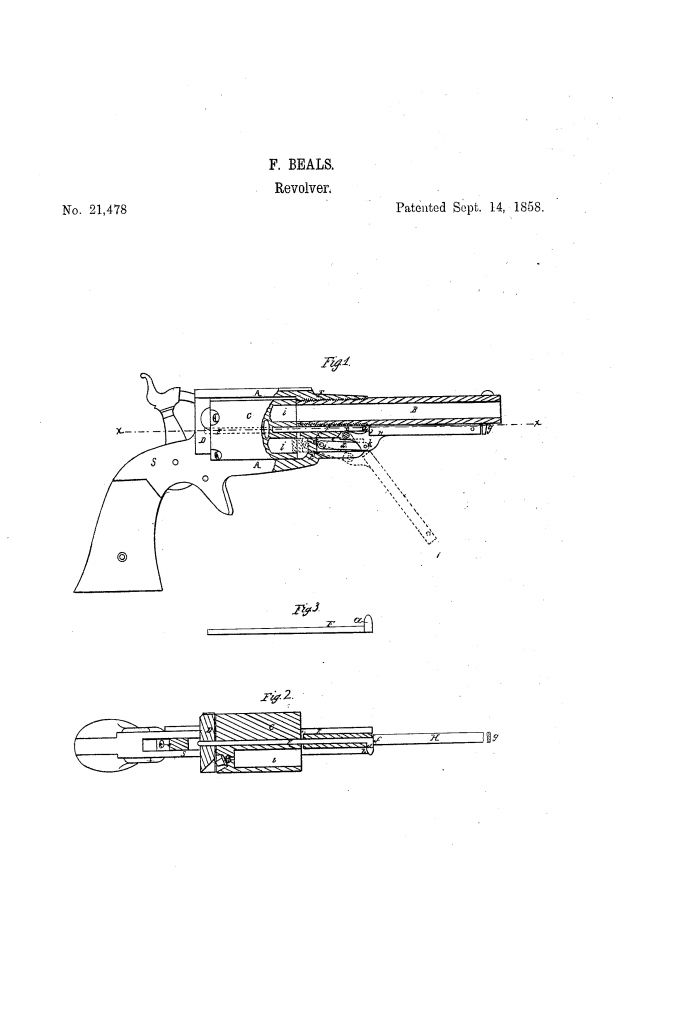
Beals’ patent for the loading lever
All models were of the pocket size, five shot cylinder and .31 calibre.
The revolver’s specifications
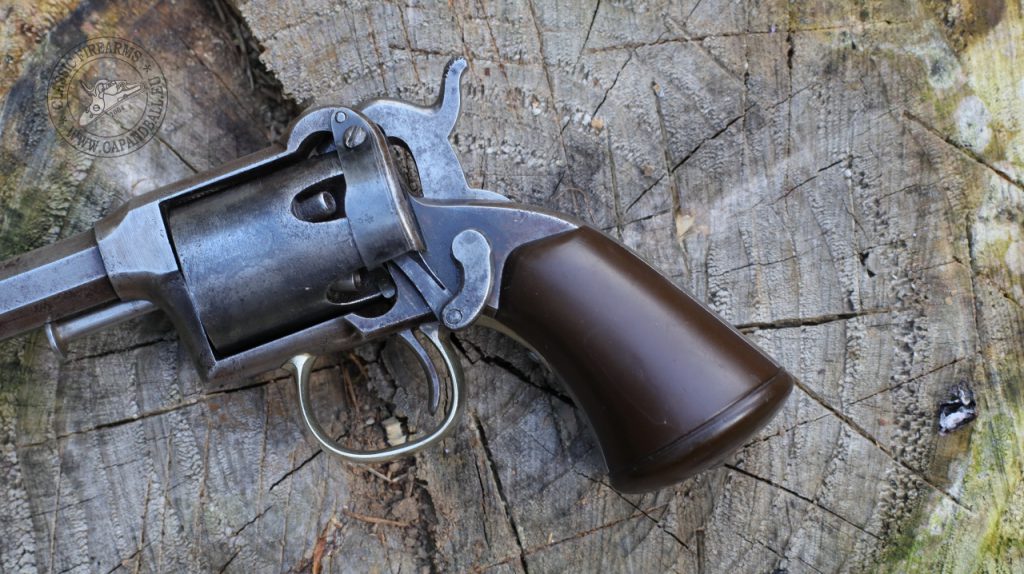
Plastic grip and the distinctive external hand assembly
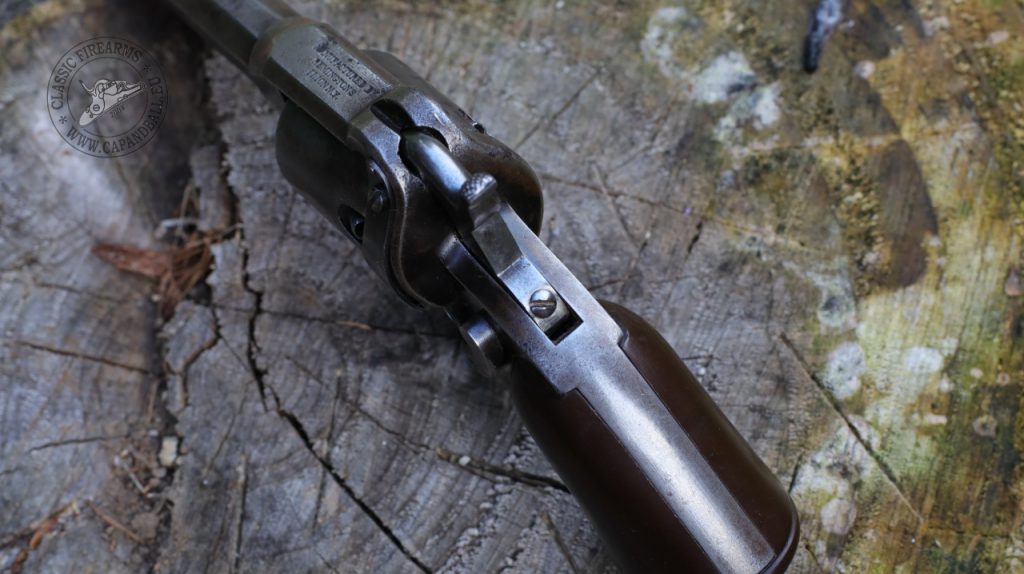
The screw on the back of the hammer releases the hammer axis
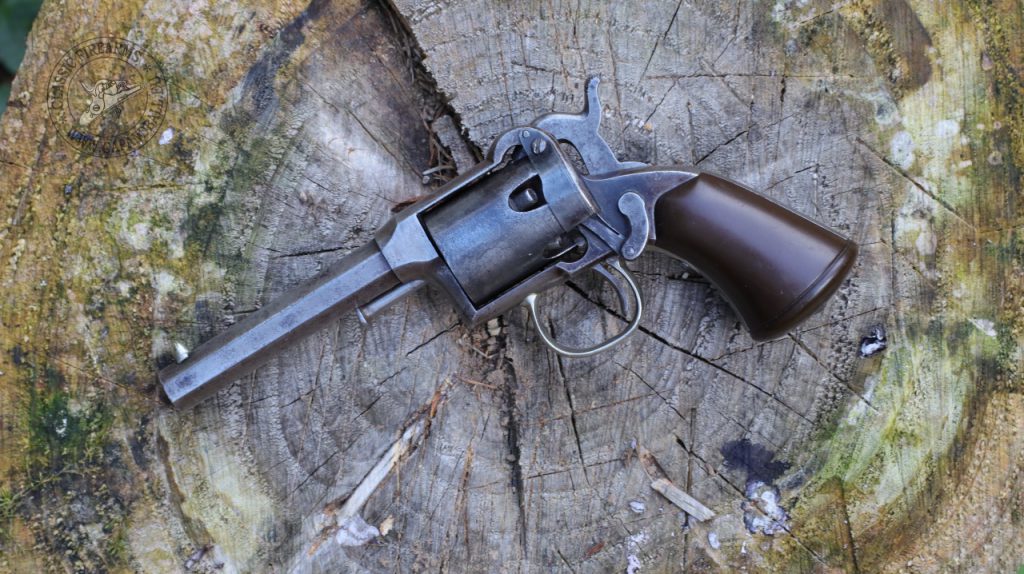 Frame: cast steel, full, hammer hits the caps through a hole on the firewall, therefore fragments of the caps cannot fall into the action.
Frame: cast steel, full, hammer hits the caps through a hole on the firewall, therefore fragments of the caps cannot fall into the action.
Barrel between the grooves .310-313
At the chamber mouth: .320”
At 0,5 cm deep: .315”
Chamber depth: .671”
Barrel length: 3”, octagonal
Front sight: dovetailed German silver cone
Cylinder: 5 shots
Rifling: 5 grooves, turning to the right, very slow twist rate
Weight: 280 g
Original instructions
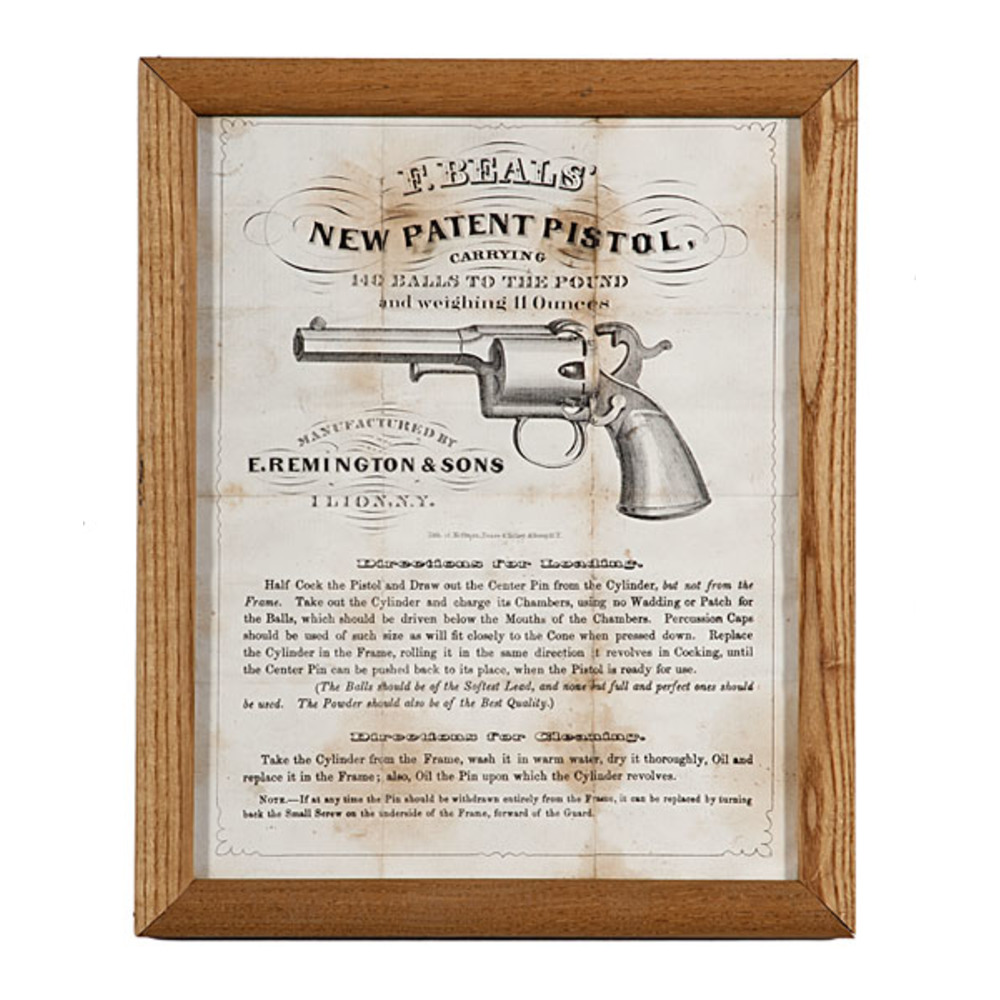 The Beals-Remington revolver was advertised under the headline “F. Beals New Patent Pistol Carrying 140 balls to the pound and weighting 11 ounces. Manufactured by E. Remington & Sons Ilion, N.Y.” In the good old days, the short advertisement also described the proper use for the gun, without the need for hundreds of pages of information:
The Beals-Remington revolver was advertised under the headline “F. Beals New Patent Pistol Carrying 140 balls to the pound and weighting 11 ounces. Manufactured by E. Remington & Sons Ilion, N.Y.” In the good old days, the short advertisement also described the proper use for the gun, without the need for hundreds of pages of information:
“Directions for loading.
Half cock the pistol and draw out the center pin from the Cylinder, but not from the frame. Take out the cylinder and charge its chambers, using no wadding or patch for the balls, which should be driven below the mouth of the chambers. Percussion caps should be use of such size as will fit closely to the cone when pressed down. Replace the cylinder in the frame, rolling it into the same direction it revolves in cocking until the center pin can be pushed back to its place. when the pistol is ready to use.
The ball should be of softest lead and note that full and perfect ones should be used. The powder should also be of the best quality.
Directions for cleaning.
Take the cylinder from the frame, wash it in warm water, dry it thoroughly. Oil and replace it in the frame, also oil the pin which upon the cylinder revolves.
Note – If any time the pin should be withdrawn from the frame it can be replaced by turning back the small screw on the underside of the frame, forward of the guard.”
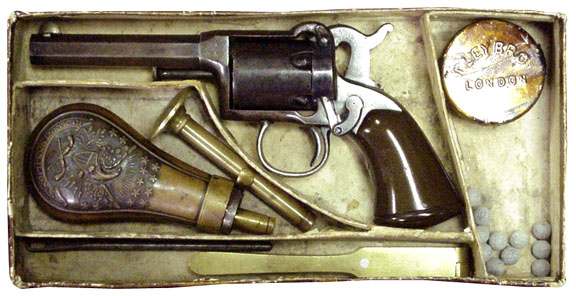
Source: remingtonsociety.org
These pistols were sold in pasteboard boxes with separate compartments for the included accessories: the powder flask, the brass bullet mould, a box of percussion caps, and the loading and cleaning tools. The user manual was a removable sheet in the lid of the box.
Disassembly and system
There are not too many solutions on this little revolver that was carried on to the famous later military revolvers of Remington. Probably the only real feature was the solid frame. As the genius and secure cylinder forwarding and locking system was protected by Colts patent, Beals had to find other solutions to solve the problem. Beals’ first model revolver therefore does not have a cylinder catch. The indexing of the chambers to the bore axis is done by a leaf spring screwed to the left side of the back of the frame. The curved end of this spring engages the recess for the nipples and so it acts as a bolt. The other support for locking the cylinder is the hand itself that is located outside of the frame on the left side. It is attached to the tongue of the axis of the hammer. When the hammer is cocked the cylinder is locked, but it can still be rotated by hand with medium force. This locking mechanism is anything but as strong as the Colt version. The revolver has no loading lever therefore each box contained a rod for pushing the bullets into the chamber. It is obvious that the cylinder had to be taken from the frame for reloading. This is done by pulling the axis forward. On the bottom of the frame is a screw that holds it in place to prevent losing it.
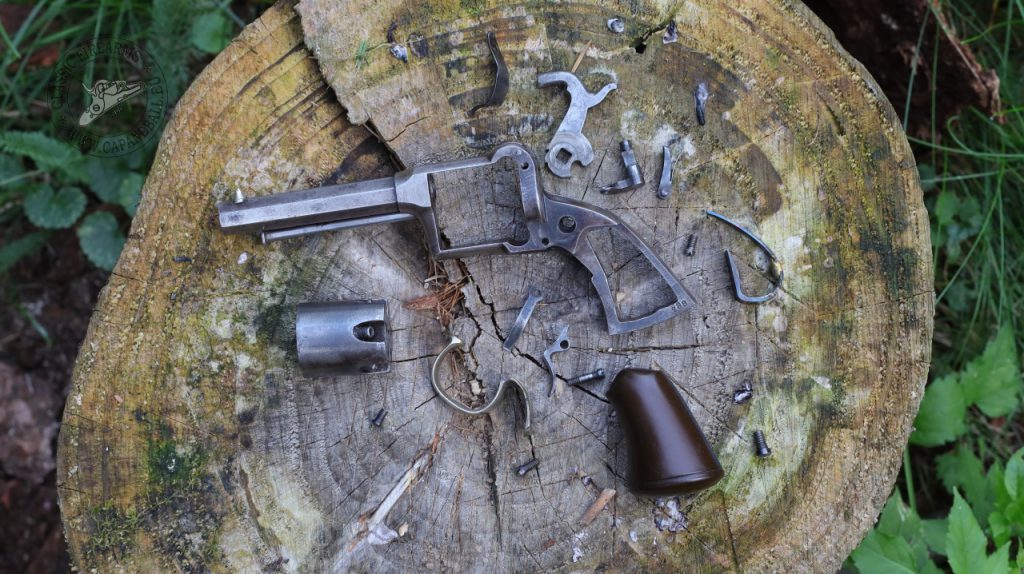
The disassembly of the tiny revolver starts with removing the grips made of plastic. This is a quite early appearance of this material on firearms, as vulcanization was only discovered in 1839 by Charles Goodyear in the U.S. and Alexander Parkes only discovered, Parkesine the first celluloid in 1855 in Birmingham. The plastic grip of the first model Beals revolver is probably the first documented use of this modern material on firearms.
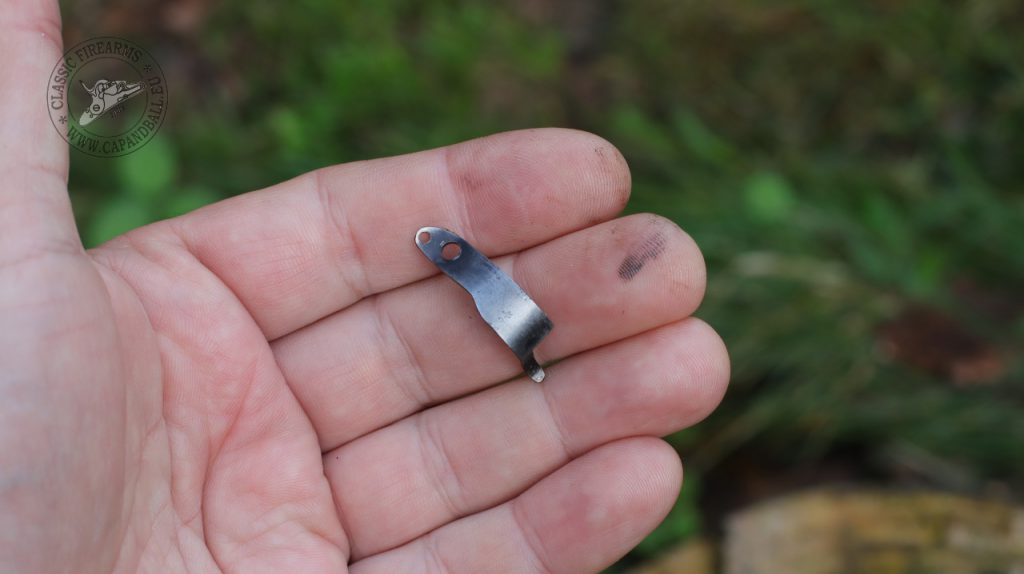
The cylinder locking spring
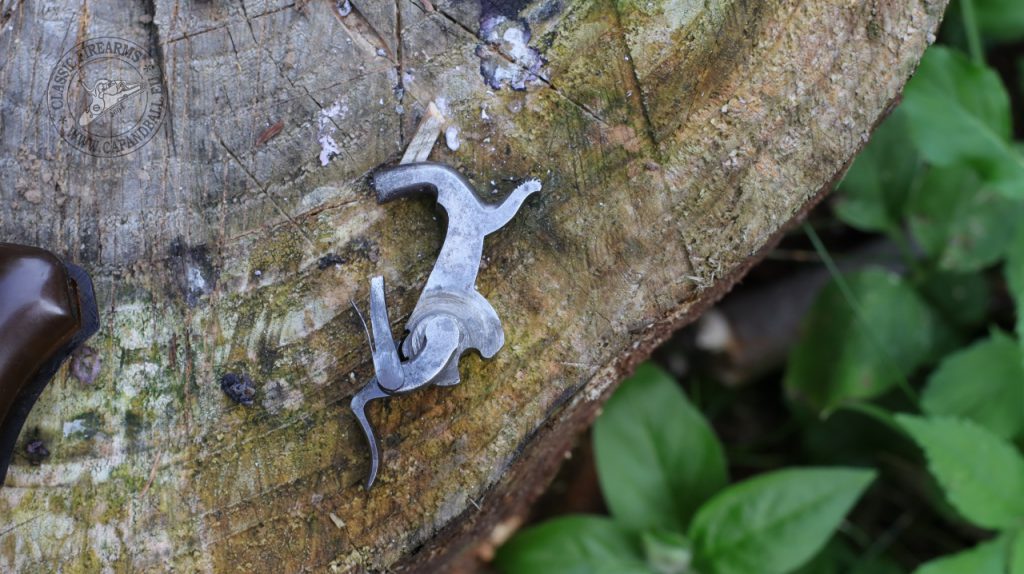
The hammer, hand and trigger assembly
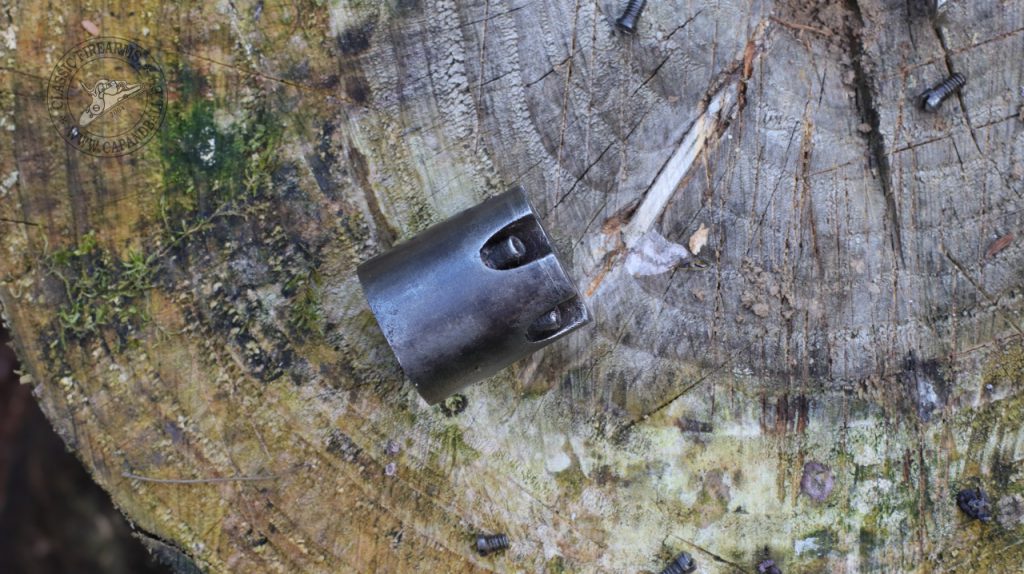
Side view of the cylinder
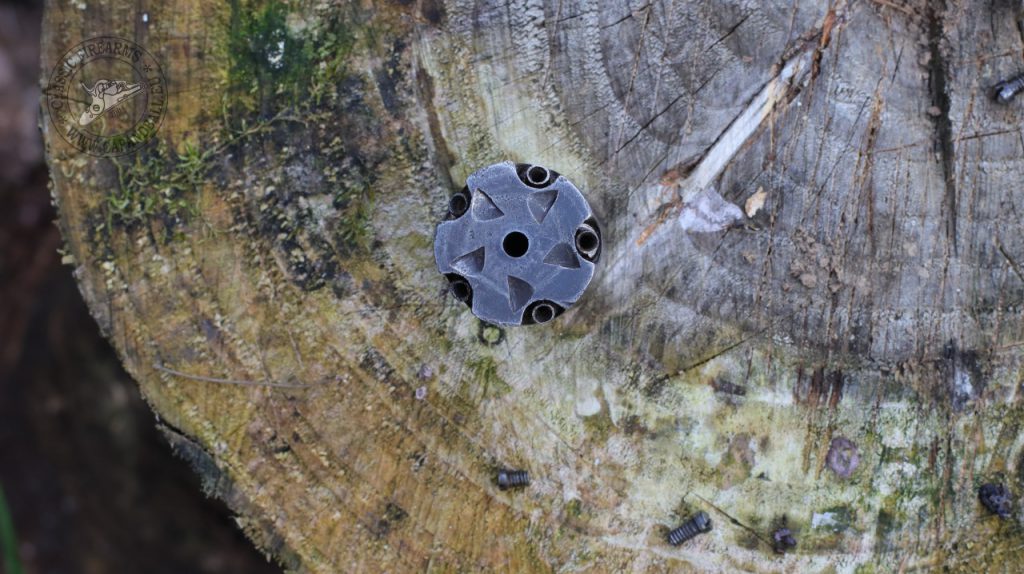
Back view of the cylinder with the ratchet
Now remove the cylinder after half cocking the hammer and pulling the axis forward. The D shape main spring is held in place by a screw on the front of the grip. Now it is time to remove the trigger guard that is secured by two screws: the first is located on the front of the grip above the screw of the main spring, the other can be accessed from the inner side of the frame from the top. The first screw also holds the spring of the trigger. Now we can remove the cylinder locking spring as well. This will allow the hand to be taken off from the tongue of the hammer axis. The axis and the hammer are secured together with a screw on the back of the hammer. Remove this to free the axis, so both can be removed from the frame.
The tiny cylinder has five chambers. The nipples are at an angle to the axis of the chambers. The chambers are well separated from each other with fire shields to prevent chain fires from the back.

The top of the barrel and frame
The barrel is screwed to the frame. On top of the frame the following script is visible:
MANUFACTURED BY
REMINGTONS
ILION N.Y.
On the barrel:
F.BEALS’ PATENT
JUNE 24. ’56 & MAY 25. ‘57
The charge
There are no factory indications available about the charge of this little pocket revolver therefore we have to ask for the most obvious help available: the revolver itself. We know that no patching or wadding was to be used, we also know that the suggested form of projectile was the round ball. We will need an oversize round ball in this case. Lube is not required according to the users’ manual, also proving that the oversized pure lead ball sealed the chambers. The volume of the chamber is quite small. The maximum charge it allows behind a .32 cal ball is approximately 15 grains depending on the fineness of the powder. The user manual asks for best quality. 3fg or 4Fg powders will be good for the job.
Against the competition
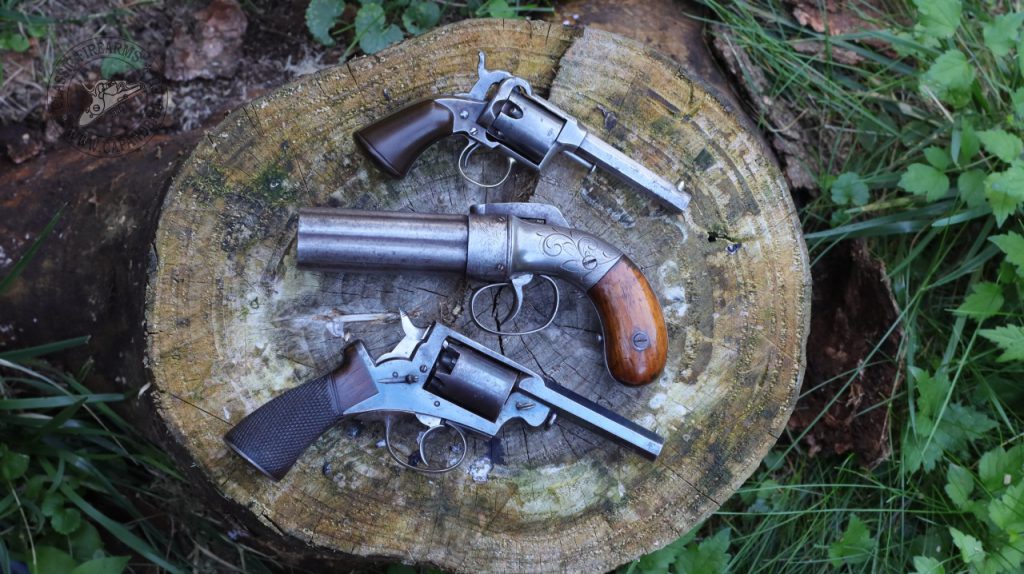
.31 cal competition: all of them are better arms
It is quite easy to judge a firearm, and declare it good or bad for a modern-day shooter, collectors, as our view on the topic is strongly retrospective. We know how reliable and accurate modern time handguns are, but that is not the way to tell the truth about a historical firearm. Not complete, but much better picture can be obtained if we compare the first model Beals pocket revolver to contemporary competitors of the late 1850s. I have altogether three .31 cal percussion revolvers that can be compared to the Beals: a Colt 1849 Model Pocket, an 1851 Model DA Adams copy made by Massachusetts Arms and a six shot pepperbox made by Allen & Thurber. I already shot these little ones, and all in all they were all fulfilling the job they were designed for: they will hit the enemy at close distance, and they will wound, or probably kill with their tiny little round ball projectiles.
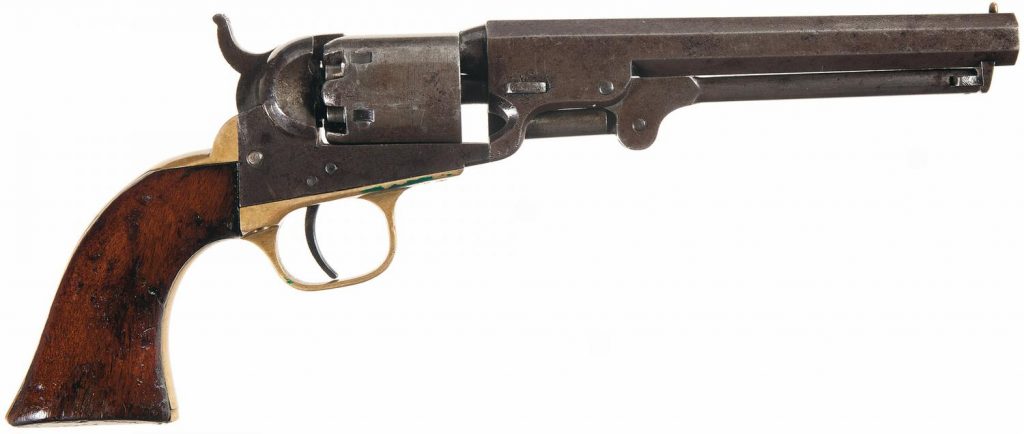
Colt 1849 pocket revolver. Source: icollector
Talking about accuracy or reliability is of course useless, as they were intended to be shot from point blank range, and as they are original – antique – pieces I will not put them to a full-scale stress test. It is a good question how can we compare these little rascals. The only thing that remains are the subjective factors: is it comfortable to shoot, is the sight picture good, is it easy to load? From this point of view the little Beals is the last in the line. All three competitors are better in all of the listed features. If I had to choose which one to carry concealed in the saloon of a 19th century town somewhere on the far west borders, I would certainly go for the Adams or the Allen & Thurber pepperbox. These two systems help you discharge your chambers in 2-3 seconds, while the SA system of the Colt and Beals are much slower to operate.
Aftermath
Colt’s patent on the locking method of the cylinder expired in 1858. That was the year when the firm Remington with Beals in charge of the revolver R&D department started to work on a large frame percussion revolver utilizing Beals’ patent for the loading lever and cylinder arbour and Colt’s design of the cylinder locking. The work was boosted with such excellent gun designers as Joseph Rider and William Elliot. The Beals Navy and Army, followed by the Elliot Army and last the New Model Army and Navy revolvers all supplied to the U.S. government paved the way of Remington to financial success. But that’s another story.
Balázs Németh, 2019
Second part coming soon!


